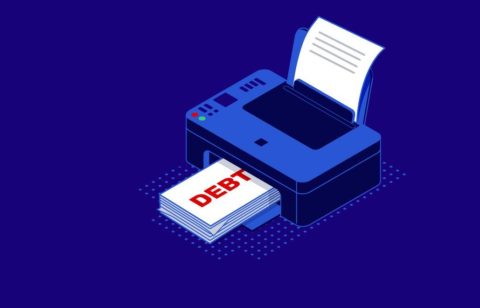Your parents may have sat you down and had that old talk about the “birds and the bees” but did they ever give you any debt advice? Did they talk to you about debt or anything else having to do with money management? My parents certainly didn’t and it appears that many parents don’t. It seems that we are supposed to either learn about debt and money management in school or absorb it through our pores.
Very few schools
There is just no arguing the fact that the more we know about good money management, the easier and happier our lives will be. Yet very few high schools offer classes in personal money management. In fact, the average high school graduate probably knows more about Lady Gaga than money management. There was a quiz given to high school students in 2006 where they were able to answer an average of only 52.4% of questions regarding insurance, credit cards, retirement, and savings, which doesn’t bode well for their futures as smart money managers.
Debt advice needed
We now live in an age where debt is as American as mom’s apple pie. One recent study revealed that the average credit cardholder has 2.5 credit cards and owes $6,500. I was also shocked to read that 36% of people responding to a recent survey had no idea what the interest rate was on the card they use the most. What all this suggests to me is that many Americans need some good debt advice.
Good and bad debt
It’s okay to have debt. In fact, sometimes it’s good to buy an item on credit – especially a large purchase. For example, a mortgage is a debt but it’s considered to be “good debt” in the sense that you would probably not be able to buy a house without it. Plus, it’s an asset that will grow in value over the years. In comparison, using credit to buy an automobile might be your only alternative but it’s “bad debt” in that the car will only decrease in value.
How much debt is too much debt?
Most experts say that the total amount of debt you owe isn’t as critical as the sum of your monthly payments. What you need to do to determine if you’re carrying more debt than you should is total up your monthly debt payments (not including your mortgage payment) and divide this by the net amount of money you take home each month. If you find that the percentage is more than 15%, you may have more consumer debt than you should.
If you have too much debt
What can you do to reduce those monthly payments if you find you have too much debt? First, you could use what’s called the “snowball” strategy of debt reduction. This is where you pay off the credit card with the lowest balance first. After that, you will use the money that is freed up to pay off the card with the second lowest balance and so forth. Do this and you should have your debt payments under control in a year or less.
Second, if you have high-interest credit cards you might be able to transfer their balances to one with a lower interest rate. There are now available what are called zero interest balance transfer credit cards. If you qualify for one of these, you could transfer the original balances to this new card. And then you need to pay 0% interest for anywhere from six to 18 months. This “timeout” would give you time to pay down your balance and get your credit card debt under control.
The best debt advice
Of course, the best advice is to not get deep into debt. If you can keep the total of your monthly payments to, say, 10% of your take-home pay, you should be okay. However, if you make the mistake of letting your debt spiral out of control, look out. You will have some hard days ahead.





